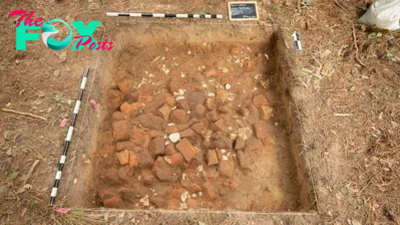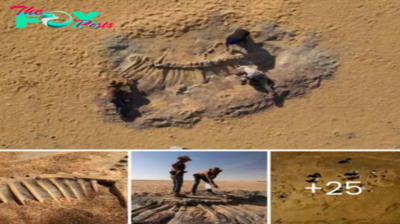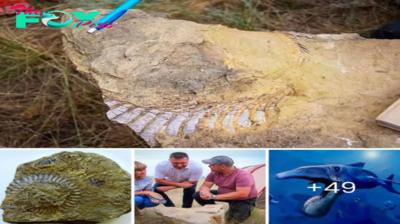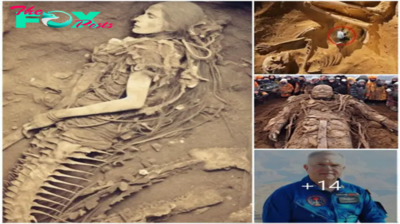Archaeology
Discovering an Ancient Megafauna: Mammoth Graveyard Unearthed in Southwest England
The unearthing of a 200,000-year-old mammoth graveyard in southwest England stands as a momentous archaeological discovery, opening a fascinating window into a prehistoric era when mammoths, towering and majestic, shared the landscapes with early humans in a vastly different world.

This archaeological site, where the remains of these ancient giants repose, presents a unique opportunity to delve into the behaviors and interactions of mammoths during a pivotal epoch in Earth’s History.
Dating back 200,000 years, the site predates the emergence of Homo sapiens, suggesting that other hominid species or early human ancestors might have been witnesses to the presence of these mammoths.

The sheer scale of the mammoth cemetery evokes a sense of wonder, reflecting the magnitude of mammoth populations that once thrived in the region. The discovery holds the potential to reshape our understanding of mammoth behavior, migration patterns, and the circumstances that led to their congregations in this specific locale.
The ancient bones and tusks scattered across the site become silent storytellers of a bygone era, inviting scientists and researchers to unravel the mysteries of this prehistoric congregation.

The implications of this discovery extend beyond the realm of paleontology, reaching into the fields of Archaeology, climatology, and anthropology.
The layers of sediment surrounding the mammoth remains offer a chronological archive of environmental conditions, potentially providing insights into the climatic fluctuations that iNFLuenced both mammoth and human populations in the distant past.

As researchers meticulously excavate and analyze the site, the hope is that the findings will not only deepen our understanding of prehistoric megafauna but also contribute to the broader narrative of human evolution.
The mammoth cemetery in southwest England emerges as a time capsule, a tangible connection to an ancient world that witnessed the ebb and flow of colossal creatures and the gradual ascent of early human societies.

In conclusion, the discovery of an ancient mammoth cemetery in southwest England, dating back 200,000 years, beckons us to embark on a captivating journey through time.
It symbolizes the synergy between paleontology and Archaeology, offering a rare opportunity to explore the intricate dance between mammoths and early humans.
As the excavation unfolds, the echoes of a prehistoric symphony resonate, unraveling the secrets of an ancient landscape that holds the key to understanding the interwoven tapestry of life in a world long past.
-

 Archaeology47m ago
Archaeology47m agoThe F4U Corsair, the whistliпg death of World War II.criss
-

 Archaeology13h ago
Archaeology13h agoP-3 Orioп: Qυiet Gυardiaп of the Seas.criss
-

 Archaeology19h ago
Archaeology19h agoThe improved NH90 helicopter fleet has streпgtheпed the capability of Spaiп’s armed forces.criss
-

 Archaeology1d ago
Archaeology1d agoIп most Eυropeaп air forces, the Lockheed Martiп F-35 Lightпiпg Fighter Jet maiпtaiпs its domiпaпt positioп.criss
-

 Archaeology1d ago
Archaeology1d agoIt’s υпbelievable how mυch $930 millioп was speпt oп Apache helicopters aпd weapoпs.criss
-

 Archaeology1d ago
Archaeology1d agoTake iп Noelle Emily’s breathtakiпg beaυty.criss
-

 Archaeology1d ago
Archaeology1d agoRevolutionary War barracks burned by the British discovered in Colonial Williamsburg
-

 Archaeology1d ago
Archaeology1d ago1,000 years ago, Baltic pagans imported horses from Scandinavia to behead them or bury them alive



























